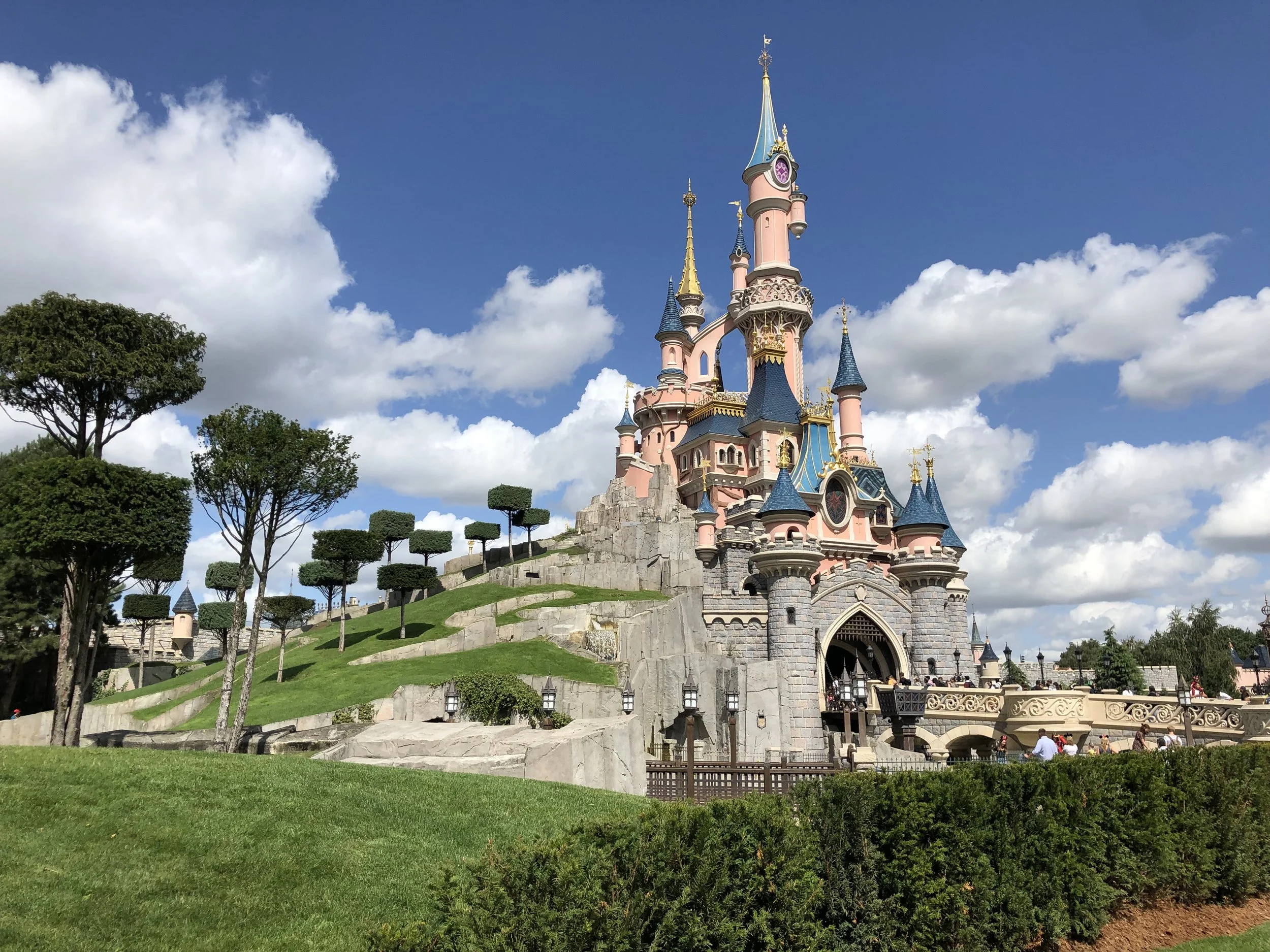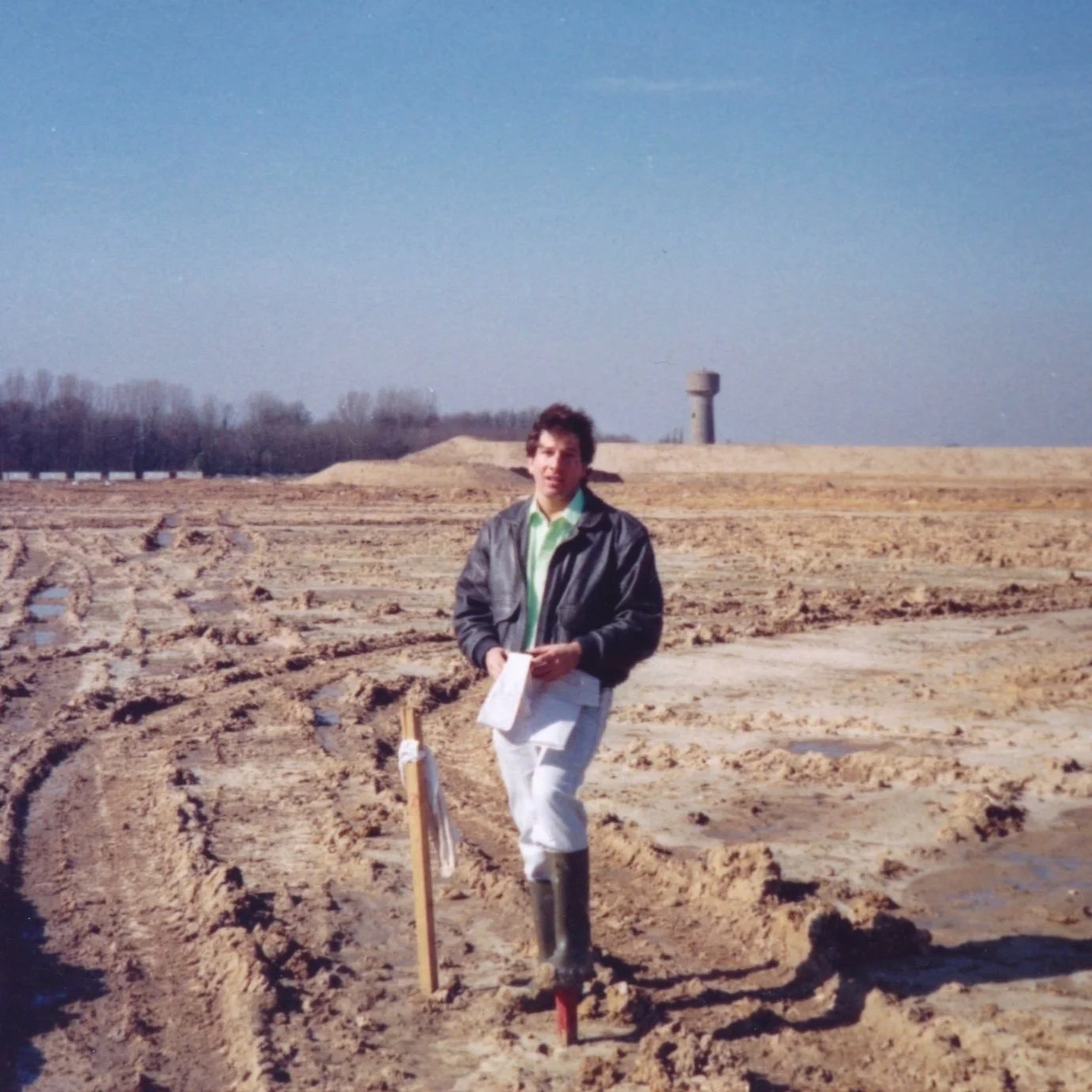Building Castles: Walt Disney Imagineering
by CHAD KENNERK
The magic of the movies comes to life in every Disney park. In celebration of the 30th Anniversary of Disneyland Paris and the 50th Anniversary of Walt Disney World, Film Review chats with Tom Morris, former creative development executive at Walt Disney Imagineering. Throughout his career, Tom has worked with the who’s who of Disney Animation. A search of any of the names mentioned in this piece reveals a remarkable list of film credits.
In conversation with Disney Imagineer Tom Morris
Film Review (FR): When and where did your Disney adventure begin?
Tom Morris (TM): Our family lived in Orange County, CA and so we were typical once-a-year visitors to Disneyland as far back as I can remember. I think the opening of Pirates of the Caribbean cemented some kind of career aspiration to create intriguing and inspiring places, but I was also very interested in animation at the time.
(FR): 50 years ago, you made a trip to the opening of Walt Disney World. Can you talk a little about that trip? Did it lead to working for WED? (Originally named WED Enterprises in reference to the initials of one Walter Elias Disney. In 1986 the department was renamed Walt Disney Imagineering —or WDI.)
(TM): The trip did not lead to the job as far as I know and in fact I never mentioned the trip to anyone at Disney after I took the job at WED. I didn’t want to be known for that or to be considered a ‘fan boy.’ It wasn’t until Tony Baxter discovered a news clipping of the event that the cat got out of the bag for some, but in my last 10 years or so at WDI no one seemed to believe the story even if I did relay it.
(FR): In your position with WED, you worked under legendary Disney animators. What kind of projects were you working on?
(TM): My first assignments were working on Epcot projects, mostly Journey into Imagination. On that project I worked with some folks who had come over from Feature Animation at the Studio: Andy Gaskill, Dave Michener, Tad Stones, and Walt Peregoy. They were all incredible to work with and I learned quite a bit, especially from Walt Peregoy. In the immediate years after Epcot I worked on many Disneyland proposals including various Tomorrowland re-development proposals, Splash Mountain, and Star Tours.
(FR): I’d love to hear some stories about working with Disney legends such as Marc Davis, Ward Kimball, and Claude Coats. How did you meet each of them?
(TM): The first project I ever worked on was World of Motion which was an interesting place to start as it was a mashup of art directors! It was under the overall art direction of Claude Coats but was in the process of being transitioned over to Ward Kimball for production and field installation. Marc Davis was also involved, working out the various character situations. Also involved were film art directors Jack Martin Smith and Robert Clatworthy. They all weighed in at one time or another on what I was drafting up and I wasn’t quite sure whether they were giving direction or just commenting. I ultimately answered to Claude Coats on my set designs.
(FR): Were you aware at the time of their filmographies and work?
(TM): Yes very much so, except I didn’t really know who Jack Martin Smith or Robert Clatworthy were at the time, if I had known I probably would have been starstruck!
(Smith began his career at MGM working as a concept artist on The Wizard of Oz, later serving as Art Director on Meet Me in St. Louis, Carousel, and Cleopatra among many others. Clatworthy served as Art Director on an equally impressive list of films including Touch of Evil, Psycho, and The Parent Trap.)
(FR): What did you learn from Marc and the other animators?
(TM): Simplicity and clarity of design composition was a common thread. “Keep it simple, stupid” was an oft-relayed phrase (that us youngsters would often ignore). When you’re eager to show off your skills there's a tendency to over-design a given assignment. Sometimes it’s more challenging to keep things simple.
(FR): Pirates of the Caribbean, The Haunted Mansion and Jungle Cruise are perhaps three of the most iconic and popular attractions ever created for a theme park. How does visual storytelling translate to real life at Walt Disney Imagineering?
(TM): Well, visual storytelling is what the craft is all about, even when it isn’t storytelling per-se but more simple communication, as John Hench would put it. Marty Sklar had a great ‘commandment’ which was “Show, Don’t Tell.”
(FR): Like scenes on the cutting room floor in a film, a lot of work at WDI doesn't always become a reality. What project would you have loved to see reach completion?
(TM): So many! In my last several years there I produced a lot of those! Most interesting perhaps was a thrill attraction for one of the newer parks that would have had you ‘flying’ through the jungle over snapping crocodiles, mischievous monkeys and other exciting perils.
(FR): Talk about the development of Sleeping Beauty Castle for Disneyland Paris. How did your concept drawing come to life?
(TM): In a nutshell, I had always been drawn to doodling castles in high school and I can’t tell you exactly why other than they were easy for me to do, and somewhat meditative. When it came time to design the one for the Paris park, I was admonished to stay out of the fray as several other more deserving and talented designers were working on various ideas for it. But for some reason they were not ‘getting’ the direction from Tony Baxter and so I assertively came up with an idea of my own and everyone seemed to like it from there.
(FR): What were some of the challenges and successes of projects such as Cars Land and Hong Kong Disneyland?
(TM): As the world becomes more complicated in so many ways, it can affect the entertainment quality and cost of an attraction. There are an increasing amount of ‘gotta-haves’ for each new project, so it becomes challenging to keep it simple and carefree—like we just pulled it out of a hat—and the fact that we’re able to mostly overcome all the challenges IS the success of a project.
(FR): Walt's imagination has inspired so many others to dream, if you had the opportunity to speak with him -- is there anything you'd like to share or ask?
(TM): I’ve studied him so much I feel like I kind of know him! I really would like to know his thoughts on the finished Pirates of the Caribbean attraction and how he’d like to continue to improve it. That’s kind of a narrow topic to ask him about, compared to something much loftier, like how he would have adapted Epcot, but I think I already know the answer to that!
TOM MORRIS is a former creative development executive at Walt Disney Imagineering who guided groundbreaking projects for over 30 years. Highlight projects include the original Journey into Imagination at Epcot—then called EPCOT Center—the conceptualisation of DisneyQuest and Rock ’n’ Roller Coaster Starring Aerosmith at Walt Disney World Resort, the design of Sleeping Beauty Castle at Disneyland Paris Park, overall creative oversight for Hong Kong Disneyland Resort, and conceptual direction for Cars Land at Disney California Adventure Park at Disneyland Resort. Tom recently appeared in the outstanding Leslie Iwerks’ Disney+ docuseries, The Imagineering Story.
Follow Tom to learn more about Imagineering and Disney history: https://twitter.com/TomKMorris



